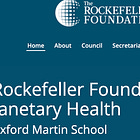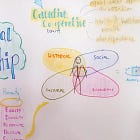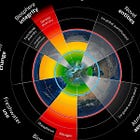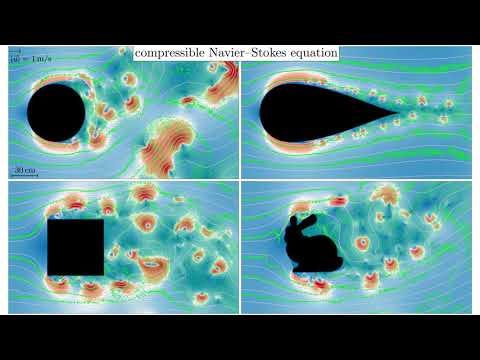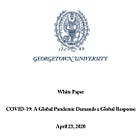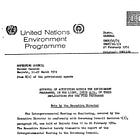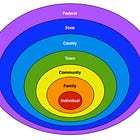In 1968, UNESCO convened the first international conference to consider the scientific basis for rational ’use and conservation of the biosphere’. Among its recommendations was a seemingly innocuous call for research into ‘the establishment of the necessary balance between man and his environment’.
Nearly six decades later, this phrase has evolved into something far more sinister: the ideological foundation for what could become the most sophisticated system of totalitarian control ever devised.
Executive Summary
What presents itself as a scientific and ethical framework for global health is, in fact, the final phase of a long-planned cybernetic system of population control. Under the banners of ‘One Health’ and ‘Planetary Health’, a network of aligned institutions have codified an algorithmically-managed governance regime that treats the human population as both a pathogen and a variable to be optimised.
This regime operates through a feedback-based architecture that combines global surveillance, crisis-triggered legal protocols, stakeholder enforcement mechanisms, and ‘Digital Twin’ computational modeling to manage population behavior at scale. The COVID-19 pandemic marked the activation of this system, and the 2025 WHO Pandemic Agreement now provides its formal legal foundation, with its mandate broadened to include every aspect of planetary management under the guise of perpetual ‘emergency’.
Through digital ID systems, surveillance infrastructure, pandemic preparedness, ecological modeling, and behavioral compliance tools, this architecture enables anticipatory interventions — typically entirely without democratic oversight. Its enforcement is increasingly outsourced to private actors, philanthropic alliances, global modellers, and expert networks, removing accountability while retaining legitimacy through appeals to ‘science’ and ‘planetary ethics’.
This is the documented culmination of a governance model long in development, built on cybernetic principles, and justified through health security, environmental crisis, and ‘moral’ obligation. Once fully activated, it functions computationally as a self-correcting control loop: populations are modeled, deviations from ecological ‘balance’ are detected, and interventions are triggered — whether political, economic, biological, psychological… or pharmaceutical.
The system’s strength lies in its subtlety. And unless it is exposed for what it is — an automated architecture of planetary management — there will be no need for overt coercion, and it will ‘leave no one behind’.
The control will become total.
System Architecture Summary
The institutional architecture reveals a comprehensive framework built from seemingly separate initiatives that converge into a unified control system operating within ecologist Zev Naveh's ‘Total Human Ecosystem’; a theoretical framework that integrates human systems with natural systems as ‘the highest co-evolutionary ecological entity on earth’. This conceptual architecture positions human populations as manageable components within ecological systems rather than autonomous agents with rights.
The legal foundation progresses from UNESCO's 1968 call for ‘necessary balance between man and environment’ through the Manhattan Principles integrating biodiversity with health decisions, to the Berlin Principles treating humans as ecosystem components requiring management. This culminates in the WHO Pandemic Agreement of 2025, which expands beyond observable disease outbreaks to include algorithmic predictions of ‘pandemic potential’ derived from environmental, social, and economic factors. Through One Health integration within the THE framework, models like IIASA's BLOOM can identify biodiversity breakdown, climate change, or social inequality as triggers for pandemic risk assessments, meaning virtually any human activity can justify interventions such as lockdowns and quarantines based on computational forecasts.
The technical infrastructure operates as the cybernetic nervous system of the THE, integrating digital identity systems with real-time monitoring platforms that combine data from satellites to smartphones. Machine learning systems process surveillance data to generate automated intervention recommendations that treat human populations as variables in ecosystem optimisation equations. The Pandemic Agreement enables these systems to activate automatically when algorithmic thresholds are crossed, bypassing democratic processes through the authority of ‘planetary health’ management.
Control mechanisms span the four critical domains of the THE: territorial control through integrated landscape management that subordinates property rights to ecosystem algorithms; energy and resource allocation through carbon credit systems that ration access based on calculated ‘planetary impact’; information management through computational cultural engineering that aligns all communication with ecosystem objectives; and knowledge control through funding mechanisms that exclude research challenging the THE framework while promoting expert consensus that legitimises human population management as scientific necessity.
COVID-19 established operational precedents proving populations accept algorithmic authority when framed as zoonotic disease crossovers, while the Pandemic Agreement formalises these precedents into permanent treaty obligations, while expanding the operating mandate significantly beyond health. Each component operates through existing institutions with established legal authority and demonstrated public acceptance, requiring no revolutionary change. The system activates through computational triggers within current frameworks, disguised as scientific necessity and environmental protection, but fundamentally operates to manage human populations as ecological variables within Naveh's Total Human Ecosystem.
Under this framework, practically any human activity can now be used as a justification to replicate authoritarian COVID-19-era policies.
The following will detail the systems architecture in detail. Should you be in a hurry, you can skip to ‘Part 2: The Pathway to Global Control’.
Part 1: The System Architecture
The Manhattan Principles
At the center of this dystopian possibility lies the ‘One Health’ approach1, outlined through the Manhattan Principles2 of 2004. These principles, developed by representatives from WHO, UN FAO, CDC (and other major international organisations), establish several concerning precedents:
Manhattan Principle 6
Biodiversity conservation perspectives should be ‘fully integrated’ into health solutions. This isn't a suggestion — it's a framework that makes environmental and health decisions inseparable, placing both under centralised scientific management.Manhattan Principle 8
Authorises ‘mass culling of free-ranging wildlife species’ when there's ‘multidisciplinary, international scientific consensus’ that a ‘wildlife population poses an urgent, significant threat to human health, food security, or wildlife health more broadly’. Not only does this principle explicitly enable the culling of species, but the principle also removes such decisions from local democratic processes and places them with international experts.Manhattan Principle 9
Establishes ‘vaccine / pharmaceutical manufacturers‘ as decision-making ‘stakeholders’ in global health surveillance and response systems, creating institutional conflicts of interest where companies profit from the very emergencies they help identify.
But the most chilling aspect relates to the Berlin Principles3 of 2019, which updated the Manhattan framework within an explicit ‘One Health ethical framework’ that treats humans like the ‘other animals’ in ecosystem management decisions, and even further shifts the goalposts to include ‘solidarity and environmental justice’, which can scarcely be said to be about individual human health at all:
Underpinning the Berlin Principles is a broad One Health ethical framework that aims to foster the health of humans, animals and their shared environments and to endorse collaboration that breaks down disciplinary and policy silos to this end. The current entwined emergencies of public health, biodiversity loss and climate change clearly illustrate the impossibility of protecting human health in isolation from the health of other animals and the environment. But these three emergencies also bring to the forefront two related values that are key to developing joined-up ethical thinking in the context of One Health: solidarity and environmental justice.
But the Berlin Principles4 shifts the goalposts even further:
Planetary Health refers to the health of human civilisation and the state of the natural systems on which it depends. It integrates the health of the natural world similar to the original One Health concept, but does not address animal health specifically‘
Human health now considers virtually any factor of ‘planetary health’, inclusive of ‘climate change’, to be an input. And to ensure the picture is painted
Invest in educating and raising awareness for global citizenship and holistic planetary health approaches among children and adults in schools, communities, and universities while also influencing policy processes to increase recognition that human health ultimately depends on ecosystem integrity and a healthy planet
In other words — they seek to pull the same trick of ‘educating’ the world populace in much the same way they did in 1949 and 1968. The objective? To program all people to become good, obedient, and utterly rootless ‘Cosmopolitan’ slaves to our ‘collective purpose’ dictated through the future ‘meta-crises’ through continuous messaging channelled through ‘Global Ethics’.
In short, the preposterous ‘meta-crises’5 will enable perpetual lockdowns under the guise of ‘emergency’, the ‘global ethics’ will communicate these ‘values’ through cultural engineering, the same value will be taught through education and religion — eventually even used to back our future dual-currency, backed by carbon.
But we’re still short a theoretical angle how this connects to the ‘culling of the human specie’. So let’s trace that down — and to begin, we need to return to 1968.
The Historical Foundation: UNESCO 1968
In 1968, UNESCO convened the first international conference on 'the scientific basis for rational use and conservation of the resources of the biosphere'6. The conference established core concepts through specific recommendations:
Recommendation 3.2
‘That continuing and intensified research be undertaken on the ecology of human diseases with special reference to those associated with environmental change and to the zoonotic diseases arising from interactions between man and animals’.Recommendation 3.3
’That this research be directed at solving increasingly important problems of the establishment of the necessary balance between man and his environment in relation to the maintenance of his health and well-being’.
These recommendations establish that humans must be ‘balanced’ with their environment, that imbalance causes zoonotic diseases, and that achieving this balance is ‘necessary’ for health maintenance — it’s not optional. This creates the ideological foundation for treating human populations as variables in ecosystem equations.
The Technical Infrastructure
Modern tyranny won’t rely on manufactured crises — it will predict them. Organisations like the International Institute for Applied Systems Analysis7 (IIASA) are already developing models that link ‘biodiversity breakdown’ to zoonotic illnesses with ‘pandemic potential’. These ‘BLOOM’8 projects create computational frameworks exploring how ecosystem changes translate into disease spillover risks. And that, as it happens, resonates deeply with Manhattan Principle 29 which states:
Recognise that decisions regarding land and water use have real implications for health. Alterations in the resilience of ecosystems and shifts in patterns of disease emergence and spread manifest themselves when we fail to recognise this relationship.
In our dystopian scenario, such models become the scientific justification for anticipatory governance10 through forward predicting computational modelling (Digital Twins)11 and ‘expert panels’. An algorithmic prediction of ‘ecosystem imbalance’ leading to pandemic risk would trigger international emergency protocols, bypassing normal democratic processes through the authority of ‘best available science’.
Yet, the models themselves fundamentally claim they can forward predict the unpredictable. You cannot forward predict chaos theory, and the claim of future prediction over decades is nothing short of an egregious lie. And this, incidentally, the IIASA-associated Soviet scientist, Nikita Moiseev, realised already in the 1970s. Yet, he persisted — because the objective never was to ‘save’ anything, planet or otherwise.
But simply modelling the world through the EU’s (‘Destination Earth‘) DestinE12, Fraym13 and others isn’t quite enough. We also need surveillance ‘indicator’ information14 to feed the allegedly future-predicting Digital Twin15.
This further calls for Digital ID serving as our personal gateway to ‘the system’, along with automatic policy setting through cybernetics.
Digital Identity and Monitoring Systems
COVID-19 response established operational precedents for:
Digital Health Passports Controlling Access to Services
Digital certification systems linking biological status to access permissions. These systems required individuals to present algorithmic verification of vaccination status, test results, or health metrics to access employment, transportation, retail services, and public facilities. The infrastructure demonstrated technical feasibility of conditioning basic social participation on compliance with centrally-determined biological requirements.
And the ‘passports’ themselves were a form of Digital ID16.Real-Time Biological Monitoring Systems
Contact tracing applications tracked individual movement patterns and proximity interactions through mobile device surveillance17. Health monitoring platforms collected continuous biological data including temperature, heart rate, and other physiological indicators. These systems demonstrated capability for population-scale biological surveillance and real-time health status monitoring without individual consent or local oversight.
And this initiative finds its origin in Georgetown.Algorithmic Decision-Making Overriding Local Governance
Computational models projecting infection rates, hospital capacity, and mortality risks became the primary basis for policy decisions across jurisdictions18. Local democratic processes were bypassed through emergency powers activated by algorithmic predictions rather than demonstrated local conditions. ‘Following the science’ became institutional justification for overriding normal democratic accountability and local decision-making authority.International Coordination Bypassing National Sovereignty
Standardised response protocols were implemented across national boundaries through coordination between international health organisations, national emergency authorities, and private sector partners. Border controls, movement restrictions, and intervention measures were harmonised through international frameworks rather than bilateral negotiations or democratic processes19. This demonstrated operational capacity for synchronised global responses managed through international institutional coordination.
These systems demonstrated the technical feasibility of population-scale biological monitoring, digital access control, and automated response coordination across national boundaries.
Surveillance and Data Integration Platforms
The aspect of global surveillance comprise a substantial vertical integration of information gathered at all levels:
Real-Time Biological Monitoring
Integrated platforms such as GEOSS20 derivates EO4HEALTH21 and GEOHEALTH22 combine health data from digital devices, environmental sensors, real-time satellite surveillance and biological sampling to create continuous population health surveillance. These systems track individual and aggregate biological markers, movement patterns, and environmental exposures in real-time. When coupled with test-and-trace systems and powered with Digital ID/Vaccine Passports, the result is a world where no one can hide.Algorithmic Decision Support Systems
Machine learning platforms process surveillance data to generate automated recommendations for intervention23. These systems identify individuals, communities, or regions requiring intervention based on algorithmic risk assessments rather than clinical diagnosis or democratic decision-making.
And at no time do ideals of democracy enter the frame.International Data Sharing Networks
Standardised data formats enable real-time sharing of biological, environmental, and behavioral data across national boundaries through platforms managed by international organisations24. This creates global visibility into local population conditions and standardised response protocols.
Environmental Monitoring Infrastructure
International data sharing is one aspect of Manhattan Principle 925, which further remind us that we also need ‘indicator’ data on animal health:
Increase investment in the global human and animal health infrastructure commensurate with the serious nature of emerging and resurging disease threats to people, domestic animals and wildlife. Enhanced capacity for global human and animal health surveillance and for clear, timely information-sharing…
This comes through a variety of sources:
Ecosystem Health Sensors
Networks of environmental monitoring devices track biodiversity indicators, pollution levels, climate variables, and ecosystem service provision in real-time26. These sensors provide the environmental data that feeds into integrated risk assessment models.Satellite and Remote Sensing Systems
Global monitoring capabilities track land use changes27, deforestation, agricultural practices, and population density changes that correlate with ecosystem-health risk factors in predictive models.Integrated Assessment Platforms
Computational systems combine environmental monitoring data with population health surveillance to generate real-time risk assessments for ecosystem-health interactions28. These platforms identify emerging threats and recommend interventions based on algorithmic analysis rather than human assessment.
The Governance Mechanism
Subsidiarity Principle Implementation
The principle of ‘subsidiarity’29 promises to make ‘decisions at the ‘lowest appropriate level’ — and this certainly sounds democratic. In practice, it becomes a tool for centralisation. Who determines which level is ‘appropriate’, especially in terms of allegedly global matters? International experts and stakeholders, naturally.
Subsidiarity thus becomes the mechanism through which global technocrats override local communities in the name of ‘planetary health’30, and the 2025 WHO Pandemic Agreement31, while explicitly preserving national sovereignty in its text, operates within this larger framework of ‘soft law’ (aka ‘soft coercion’) — creating expectations and pressures that make non-compliance appear irresponsible rather than democratic. Refuse, and you’ll be cut off SWIFT or the financial markets.
The intellectual framework for this system was provided by ecologist Zev Naveh's concept of the ‘Total Human Ecosystem’32 (THE) — a ‘holistic’ approach treating human populations as components within managed ecological systems rather than autonomous agents with rights. A system which discards capitalism wholesale, while adopting global surveillance from spy satellite through to your mobile phone.
In his own words, Naveh's THE integrates ‘human systems (technosphere and noosphere) with natural systems (biosphere)’ into ‘the highest co-evolutionary ecological entity on earth’. Within this framework, human populations become variables in ecosystem optimisation equations, subject to scientific management for planetary health.
In this regard, the biosphere refers to life on our planet, the technosphere to what humanity has built, and the noosphere to the collective thought of humanity. The terminology may seem complex at first glance, but it becomes clearer once you see through the Aesopian language.
Stakeholder Integration
Current frameworks systematically integrate non-governmental actors into official decision-making processes through formalised participation mechanisms:
Pharmaceutical Manufacturers as Operational Partners
International health frameworks establish pharmaceutical companies as essential partners in surveillance, response planning, and intervention implementation33. Companies provide technical expertise for vaccine development timelines, manufacturing capacity assessments, and distribution logistics. This partnership model gives profit-driven entities advisory roles in determining intervention strategies and resource allocation priorities.International Scientific Consensus Formation
Expert networks coordinate across international organisations to establish unified scientific positions on complex issues. The World Health Organisation, Food and Agriculture Organisation, World Organisation for Animal Health, and United Nations Environment Programme synchronise their scientific assessments through joint expert panels and shared research frameworks34. This coordination creates the appearance of independent scientific consensus while operating through institutionally aligned expert communities.Corporate-Regulatory Alignment
Private sector interests become aligned with regulatory frameworks through stakeholder consultation processes that incorporate industry perspectives into policy development. Environmental regulations include assessments of economic feasibility provided by affected industries. Health interventions incorporate private sector capacity assessments and implementation partnerships35. This creates regulatory frameworks that accommodate corporate operational requirements while maintaining public interest justifications.Civil Society Organisation Channeling
International frameworks provide structured consultation mechanisms for non-governmental organisations, professional associations, and advocacy groups36. These processes enable civil society input while ensuring that participation operates within pre-established parameters and accepted frameworks. Organisations gain influence through demonstrated alignment with international priorities and technical expertise rather than democratic representation or grassroots accountability.Multi-Stakeholder Governance Platforms
Formal mechanisms integrate governmental, corporate, and civil society representatives in coordinated decision-making processes37. These platforms operate through consensus-building approaches that require all participants to work within shared frameworks and accepted parameters. Dissenting perspectives are managed through facilitated dialogue processes that seek accommodation within existing institutional structures rather than fundamental challenges to established frameworks.Resource Allocation Influence
Stakeholder integration extends to funding decisions, resource allocation priorities, and implementation strategies38. International organisations incorporate stakeholder input into budget priorities, program design, and evaluation criteria. This creates systematic influence for well-resourced and technically sophisticated stakeholders while maintaining democratic legitimacy through inclusive consultation processes.
Automated Response Coordination Systems
Indicator governance is progressively offshored to computers:
Emergency Response Automation
Digital platforms enable automated coordination of international responses to algorithmic threat detection39. These systems can initiate multiple intervention protocols simultaneously across jurisdictions based on computational predictions.Resource Allocation Algorithms
Automated systems distribute medical resources, implement movement restrictions, and coordinate intervention activities based on algorithmic optimisation40 rather than local decision-making or democratic processes.Compliance Monitoring Systems
Digital platforms track individual and community compliance with intervention measures through integrated monitoring of digital transactions, movement patterns, and biological markers41. Non-compliance triggers automated escalation protocols.
The Cybernetic Control Loop
The ultimate objective is full automation. Under the Manhattan Principles framework, this control structure becomes hypothetically possible through the control of four integrated mechanisms:
Territorial — spatial control through ‘integrated landscape management’
Energy/Resource — resource management under ‘ecosystem optimisation’
Information — flowing through computational cultural engineering
Knowledge — knowledge production and education
But key to them all is understanding exactly how this control should function.
Cybernetic Management Structure
Control would be implemented through classic cybernetic feedback loops, drawing from Alexander Bogdanov's tektology — using social science to organise natural science. This can be achieved through a universal mechanism, functioning to ‘stabilise’ any aspect of society:
Reference Values (Desired State)
An ‘optimal’ value is established relating to, say, human-environment balance, which further include population densities, consumption levels, age statistics and demographics, even compliance metrics.Surveillance Systems (Present State Monitoring)
Real-time monitoring through integrated digital platforms (GEOSS, City IoT, mobile phones) tracks biological status, movement patterns, resource consumption, and ecosystem indicators. These indicator values can be located through the SDG Indicators, the Aichi Targets (biodiversity), the HDI Index (human development), and others. There’s a vast amount of indices in existence already, and a more recent topical addition is the ‘Global Health Security Index’42 which includes 37 related surveillance data ‘indicators’.Automated Adjustments (Corrective Actions): When surveillance detects deviations from reference values, algorithms automatically trigger interventions — lockdowns, vaccination campaigns, movement restrictions, resource allocation changes. With time, the measured surveillance ‘indicators’ will close in on desired state reference values, which then leads to progressive policy updates.
The system ultimately becomes self-regulating eventually eliminating the need for human control entirely, while maintaining management of even the human population, thus working to guarantee our ‘well-being’ as a specie — though most certainly not at an individual level — or as outlined by recommendation 3 of the 1968 UNESCO Biosphere Conference43:
… the establishment of the necessary balance between man and his environment in relation to the maintenance of his health and well-being in their broadest connotations.
Per plan, the ‘navigators’ of Spaceship Earth will eventually end up with a system, where the adjustment of reference values will (supposedly) take us to Teilhard’s promised ‘Omega Point’, while Hubbard’s ‘Conscious Evolution’ describes our journey.
Territorial Control
Spatial control through ‘integrated landscape management’ (aka ‘The Landscape Approach’), based upon the Convention on Biological Diversity’s ‘Ecosystem Approach’44 which establishes the functioning principles which include ‘subsidiarity’ in its Malawi Principle 245:
Principle 2: Management should be decentralized to the lowest appropriate level.
Under this framework:
Private Property as Algorithmic Ecosystem Stewardship
Individual property ownership operates within ecosystem stewardship frameworks that subject land use decisions to algorithmic optimisation requirements46. Property owners maintain legal title while actual use decisions are determined by ‘ecosystem service’ algorithms that calculate optimal land management for carbon sequestration, biodiversity conservation, and resource efficiency. Land use permissions are granted based on algorithmic assessments of ecosystem contribution rather than owner preferences47. Property taxation and regulatory compliance become tied to ecosystem performance metrics measured through continuous environmental monitoring systems48.Agricultural and Urban Planning Through Ecosystem Models
Food production and urban development decisions are determined by integrated ecosystem models rather than local planning processes or market mechanisms49. Agricultural practices are optimised through algorithms that calculate optimal crop selection, farming methods, and resource allocation based on ecosystem health metrics rather than farmer expertise or economic considerations50. Urban planning operates through computational models that determine population density, infrastructure development, and resource distribution based on carrying capacity calculations and environmental impact assessments rather than community preferences or democratic planning processes.Unified Cybernetic Land Use Management
All territorial use operates within interconnected cybernetic systems that manage land as integrated components of larger ecosystem optimisation networks. Individual land parcels are managed as nodes within automated systems that coordinate resource flows, environmental impacts, and optimisation objectives across entire landscapes. Local land use decisions become subordinated to algorithmic coordination that optimises ecosystem performance across regional and global scales rather than local community needs or individual property rights51.Automated Resource Extraction and Conservation Algorithms
Natural resource utilisation and conservation decisions are determined by automated optimisation systems rather than democratic processes or market mechanisms52. Algorithms calculate optimal extraction rates, conservation priorities, and resource allocation based on ecosystem health models and global optimisation objectives. Mining, forestry, water use, and conservation activities operate through automated systems that coordinate resource management across territorial boundaries according to computational optimisation rather than local community input or national resource sovereignty.
Energy/Resource Control
The One Health framework enables comprehensive resource management under ecosystem optimisation:
Algorithmic Resource Allocation
Manhattan Principle 2's recognition that ‘decisions regarding land and water use have real implications for health’ creates justification for centralising resource distribution through ecosystem models rather than market mechanisms or democratic processes. Water allocation would be determined by algorithmic calculations of ecosystem service requirements rather than agricultural need or municipal demand53. Mining permits, forestry rights, and fishing quotas would be issued based on computational models that optimise biodiversity indicators rather than economic efficiency. Energy distribution networks would prioritise algorithmically-determined ‘ecosystem service zones’ over population centers, with resource extraction managed through real-time environmental monitoring systems that automatically adjust availability based on ecosystem health metrics.Carbon Credit Systems as Resource Rationing
Digital identity systems linked to carbon allowances enable programmable resource access — energy use, transportation, consumption — all algorithmically managed through ‘planetary health’ optimisation54. Individual carbon budgets would be calculated through AI systems55 factoring personal consumption history and algorithmic ‘ecosystem contribution scores’. Energy access would be rationed through smart grid systems that automatically limit household consumption based on individual carbon allowances rather than ability to pay56. Transportation would be controlled through carbon-linked mobility permits57, while consumer goods would be priced dynamically through carbon algorithms that make certain products prohibitively expensive for individuals exceeding their planetary impact quotas58.Food System Integration
Agricultural decisions would be determined by ecosystem models rather than farmer expertise or market demand, justified under biodiversity conservation requirements59. Crop selection would be mandated through algorithmic optimisation of biodiversity indicators and water usage efficiency rather than nutritional needs or economic viability60. Livestock populations would be managed through computational models calculating optimal animal densities for ecosystem health61. Food distribution would prioritise communities based on ‘ecosystem stewardship compliance’ scores, while nutritional guidelines would be determined by environmental impact algorithms promoting consumption patterns optimised for planetary rather than human health62.
Information Control
Control won’t stop with just populations and territory — it will extend to all information. Drawing from the Bolshevik concept of ‘proletkult’63 (proletarian culture), our dictator would implement computational cultural engineering:
Educational Content Algorithmic Filtering
Educational curricula are processed through ecosystem management algorithms that evaluate content for alignment with Total Human Ecosystem principles64. Learning materials are systematically reviewed for compatibility with integrated health-environment frameworks65, with content that promotes individual autonomy over collective ecosystem optimisation being identified for revision or removal. Educational standards incorporate sustainability metrics and planetary health concepts as core requirements rather than optional additions66.Scientific Research Direction
Research funding mechanisms systematically prioritise projects that support system optimisation models over investigations that might challenge integrated management frameworks. Grant approval processes evaluate research proposals for their contribution to ecosystem-health integration objectives. Academic institutions align research priorities with international framework requirements to maintain funding eligibility and institutional partnerships67. Scientific publication processes favor studies that support algorithmic management approaches over those questioning automated decision-making systems.Cultural Production Alignment
Media content, artistic production, and entertainment programming are systematically oriented toward narratives that promote human-environment ‘balance’ concepts over individual rights or local autonomy themes68. Cultural funding mechanisms prioritise projects that reinforce collective responsibility for planetary health over individual freedom narratives69. Publishing, film, and digital content platforms incorporate sustainability and ecosystem thinking as editorial guidelines rather than optional considerations.Media Curation Systems
News and information platforms systematically present automated decision-making as scientific necessity rather than political choice70. Journalistic standards incorporate deference to international scientific consensus as professional requirement71. Media outlets align reporting frameworks with established institutional authorities rather than independent investigation. Information verification processes defer to official international organisation sources over local or dissenting expert perspectives.
All information channels would be synchronised through ‘computational ethics’72 programmed with the Berlin Principles, Manhattan Principles, and UNESCO frameworks, creating a seamless cultural reproduction system.
4. Knowledge Control
The final layer controls knowledge production and education, determining what information is considered legitimate and how populations understand their relationship to planetary systems:
Research Direction Through Ecosystem Priorities
Scientific funding would be systematically directed toward ecosystem-health integration studies, with Manhattan Principle 9's ‘stakeholder’ framework ensuring pharmaceutical and environmental interests shape research agendas. Grant approval processes would evaluate research proposals primarily for their contribution to One Health objectives73, with studies questioning integrated management frameworks systematically defunded. Independent research questioning computational models or stakeholder governance would be systematically excluded from funding mechanisms and publication opportunities.Educational Curriculum Integration
Berlin Principles' call to ‘invest in educating and raising awareness for global citizenship and holistic planetary health approaches’ enables systematic integration of ecosystem management concepts into education at all levels. School curricula would be redesigned around Total Human Ecosystem principles, teaching children to view themselves as components within managed ecological systems rather than autonomous individuals74. University programs would require coursework in planetary health ethics as prerequisites for graduation across disciplines75. Educational materials would systematically present human activity as problematic for ecological balance, normalising algorithmic management and expert oversight76.Expert Consensus Formation
The Manhattan requirement for ‘multidisciplinary, international scientific consensus’ creates mechanisms for controlling legitimate knowledge through institutional coordination rather than empirical investigation. International organisations would synchronise scientific assessments through joint expert panels, creating apparent consensus while operating through aligned expert communities77. Dissenting scientific perspectives would be marginalised through exclusion from panels, denial of funding, and characterisation as ‘anti-scientific’78. Professional accreditation would incorporate adherence to ecosystem health frameworks, making career advancement conditional on alignment with One Health principles.
Integrated Control
This gives you a complete control hierarchy: space → resources → information → knowledge, all theoretically enabled by existing frameworks.
The Integrated Control Matrix
These four dimensions operate as mutually reinforcing systems within the cybernetic feedback loop.Territorial control through ecosystem management provides the spatial foundation for resource allocation algorithms.
Energy and resource rationing creates economic incentives that drive compliance with information systems.
Information control shapes public understanding of why algorithmic management is necessary and beneficial.
Knowledge control ensures that only research and education supporting the system receives institutional support and legitimacy.
Self-Reinforcing Architecture
Each layer strengthens the others through data integration and automated coordination.Territorial monitoring systems feed environmental data into resource allocation algorithms.
Digital identity systems managing resource access also control information flows through programmable content filters.
Educational institutions promoting ecosystem thinking create future experts who validate algorithmic decision-making.
Scientific consensus formation legitimises territorial and resource controls as evidence-based necessities rather than political choices.
Democratic Bypassing Mechanisms
The system operates through existing legal frameworks activated by computational triggers rather than legislative processes.
Environmental monitoring data automatically adjusts resource allocations.
Algorithmic risk assessments trigger information management protocols.
Expert consensus declarations justify territorial interventions.
Educational compliance requirements condition access to professional opportunities.
No single decision point requires democratic approval — the system executes through cascading algorithmic responses to data inputs.
The Complete Cybernetic Loop
Reference values established through international frameworks determine optimal human-environment relationships.
Surveillance systems monitor territorial use, resource consumption, information consumption, and knowledge production in real-time.
Automated adjustments maintain populations within algorithmically determined parameters through integrated control of space, resources, information, and expertise.
The Manhattan and Berlin Principles provide the ethical and legal foundation for treating human populations as manageable components within this comprehensive system, creating the theoretical architecture for cybernetic totalitarianism disguised as planetary health.
When taken as a whole these detail centralised control over all 4 aspects of human society, thus mirroring the ten planks of the Communist Manifesto almost perfectly.
Creating the Operational Precedent
The pandemic response demonstrated functional capacity for:
Population control based on computational model predictions
Lockdown decisions were implemented based on algorithmic projections of infection rates and mortality estimates rather than observable local conditions79. Mathematical models from institutions like Imperial College London justified massive population restrictions across multiple countries simultaneously80. Citizens were confined to their homes and businesses shuttered based on computational predictions that often proved inaccurate81. The precedent established that algorithmic forecasts could override individual liberty and democratic deliberation, with ‘flattening the curve’ becoming justification for unprecedented peacetime population control82.International coordination overriding national decision-making
Standardised response protocols were synchronised across national boundaries through WHO recommendations and bilateral pressure rather than sovereign decision-making processes83. Countries that resisted international protocols faced economic pressure and diplomatic isolation until compliance was achieved84. This demonstrated operational capacity for coordinated global responses managed through international institutional authority rather than national sovereignty.Corporate-government partnerships in emergency response
Pharmaceutical companies became operational partners in policy decisions through formal advisory roles in government response planning. Tech companies implemented censorship policies aligned with government messaging while vaccine manufacturers influenced regulatory approval timelines85. This partnership model gave profit-driven entities direct influence over intervention strategies, creating institutional conflicts of interest where companies profited from emergencies they helped define.Public acceptance of algorithmic authority as ‘following the science’
Citizens accepted restrictions on movement, assembly, and economic activity because experts claimed computational models demonstrated necessity. Scientific dissent was marginalised as ‘unethical misinformation’ while ‘trust the science’ became a cultural imperative that discouraged critical evaluation of predictive models86. Democratic accountability was suspended in favor of deference to technical authority87, establishing precedent for governance through algorithmic determination rather than public deliberation.Normalisation of temporary restrictions as permanent infrastructure
Emergency powers were extended repeatedly while digital surveillance systems remained operational after immediate health threats subsided88. Contact tracing applications89, health passport systems, and digital access controls were maintained as permanent monitoring infrastructure. The emergency response created lasting institutional capacity for population management through digital systems that persists beyond the original crisis justification90.
WHO Pandemic Agreement (2025)
The 2025 WHO Pandemic Agreement91 operates within this framework through ‘soft law’ mechanisms that create compliance expectations without formal coercion. While preserving national sovereignty in text, the agreement establishes:
International authority for pandemic prevention based on predictive models
The agreement expands pandemic prevention beyond observable disease outbreaks to include algorithmic predictions of ‘pandemic potential’ derived from environmental, social, and economic factors. Through One Health integration, models like IIASA's BLOOM92 project can identify biodiversity breakdown, climate change, social inequality, or economic disruption as triggers for pandemic risk assessments. This means virtually any domestic policy — from land use to demographic changes — can be classified as creating pandemic potential, justifying international intervention based on computational forecasts rather than actual health threats.Coordination mechanisms bypassing normal legislative processes
The agreement establishes rapid response protocols that activate automatically when algorithmic thresholds are crossed, enabling international coordination without parliamentary approval or democratic deliberation. Emergency powers can be triggered by predictive models rather than observable crises93, allowing WHO recommendations to override national decision-making through ‘health emergency’ declarations based on computed risk rather than demonstrated threat. Soft law mechanisms create compliance expectations that make resistance appear irresponsible while avoiding formal treaty obligations94.Stakeholder integration including pharmaceutical manufacturers
The framework institutionalises corporate participation in pandemic policy through formal advisory roles and operational partnerships. Pharmaceutical companies gain direct influence over threat assessment, intervention strategies, and resource allocation decisions while maintaining profit incentives tied to emergency declarations. Private sector ‘expertise’ becomes essential input for public health decisions95, creating systematic conflicts of interest where companies benefit financially from the very emergencies they help identify and define.Scientific consensus as unchallengeable decision-making authority
The agreement positions international expert consensus as the ultimate authority for pandemic decisions, effectively removing democratic accountability from health policy. Dissenting scientific views are marginalised through institutional alignment rather than empirical debate, while ‘following the science’ becomes justification for overriding local knowledge and democratic processes. Computational models gain authority over observable reality, with algorithmic predictions becoming unchallengeable bases for international intervention and resource allocation decisions.
The Perfect Disguise
This system's most terrifying aspect is how it would appear completely benign, even admirable:
Population control becomes ‘ecosystem management’
Reproductive restrictions, movement limitations, and demographic interventions would be framed as ‘scientifically necessary measures to maintain human-environment balance’ according to computational models. Families would be counseled on their ‘ecological footprint’96 and encouraged to make ‘responsible’ reproductive choices for planetary health. Population reduction targets would be presented as voluntary sustainability goals rather than mandated controls.Surveillance becomes ‘environmental monitoring’
Comprehensive tracking of individual behavior, consumption patterns, and biological markers would be justified as essential data collection for ecosystem health assessment. Citizens would be told their privacy sacrifices contribute to saving the planet, with surveillance presented as environmental citizenship rather than authoritarian control97. Real-time monitoring would be marketed as personalised sustainability coaching.Restriction of movement becomes ‘pandemic prevention’
Travel limitations, geographic confinement, and mobility controls would be implemented through algorithmic predictions of disease risk rather than observable threats. Movement restrictions would be continuously justified by computational models showing potential zoonotic spillover from human displacement or ecosystem disruption98. Citizens would accept confinement as responsible behavior preventing future pandemics.Information control becomes ‘scientific education’ and ‘protection from misinformation’
Censorship of dissenting views would be presented as protecting public health from ‘misinformation’ that undermines ecosystem stability. Educational curricula promoting algorithmic management would be framed as teaching scientific literacy and planetary responsibility99. Media filtering and content restrictions would be justified as preventing dangerous anti-science narratives that threaten global health security100.Property confiscation becomes ‘conservation’
Seizure of private land and resources would be implemented through ecosystem stewardship requirements that make independent ownership economically impossible. Property transfers to algorithmic management would be presented as voluntary participation in carbon credit systems and biodiversity conservation programs. Owners would be praised for their environmental leadership in surrendering individual control for planetary benefit.Elimination of democracy becomes ‘expert decision-making’
Removal of democratic processes would be framed as necessary deference to scientific authority in complex global systems beyond public comprehension. Citizens would be told that planetary health decisions require technical expertise that democratic deliberation cannot provide101. Algorithmic governance would be presented as objective, evidence-based management free from political bias and special interests.
Unlike historical totalitarianism, this system would supposedly operate through international cooperation, scientific consensus, and environmental protection — making resistance appear anti-scientific and anti-social. Opposition would be characterised not as political dissent but as dangerous ignorance threatening humanity's survival. Dissent itself would be framed as a ‘threat to our democracy’102 requiring democratic ‘strengthening’ through enhanced oversight and monitoring, creating moral isolation for anyone questioning the system's benevolent intentions.
Part 2: The Pathway to Global Control
The transformation from environmental protection to comprehensive population management could unfold through existing institutional mechanisms, requiring no dramatic seizure of power or revolutionary overthrow. Instead, the system could emerge through the gradual activation of frameworks already embedded in international law and governance structures.
Historical Foundations of Systems Management
The logic underlying today's algorithmic population governance is not new. It emerges from a deep lineage of administrative rationality, cybernetic planning, and global management theory stretching back nearly a century. The key innovation is not ethical — it is infrastructural. What has changed is the ability to simulate, surveil, and steer entire populations in real time using feedback systems.
The 1968 UNESCO Biosphere Conference coincided with the emergence of Earth systems thinking popularised by Kenneth Boulding103, Buckminster Fuller104 and Barbara Ward's105 ‘Spaceship Earth’ concept. This paradigm reframed the planet as a closed system requiring top-down expert navigation rather than a resource base for bottom-up autonomous human communities. The shift from open-system thinking (humans adapt to environments through local knowledge) to closed-system management (experts optimise human-environment interactions through global oversight) provided the conceptual foundation for treating human populations as manageable variables within planetary equations. ‘Spaceship Earth’ positioned environmental expertise as essentially governmental — requiring qualified navigators to maintain system stability against the potentially destabilising effects of unmanaged human activity.
The Planning-Programming-Budgeting System (PPBS) — originally developed by the RAND Corporation and implemented in the U.S. Department of Defense under Robert McNamara in 1961 — reframed governance as an optimisation problem. It sought to align inputs with outputs through continuous feedback loops, predictive modeling, and inter-agency coordination. Crucially, it de-emphasised democratic negotiation in favor of systems logic: what mattered was not deliberation, but measurable performance against strategic objectives. PPBS was soon adopted across civilian sectors and exported globally through the World Bank and UNDP. Its core logic survives today in Results-Based Management106, performance-based funding, and SDG indicator driven KPI systems107.
The shift from medical treatment to population management corresponds to what Michel Foucault called the 'biopolitical' transformation of the state: the management of life itself as a political object108. When predictive modeling entered through institutions like EcoHealth Alliance109, the logic became recursive: simulated futures could justify preemptive interventions110. Pandemic governance thus inherited both cybernetic planning and biopolitical ideology — control of populations via abstraction and simulation.
The institutional form follows the 19th-century financial clearinghouse model. Institutions like the BIS and IMF centralised decision-making while masking it as technical necessity. Pandemic governance now replicates this through institutions like WHO, GAVI, and the World Bank, which coordinate national actions through modeling standards, treaty obligations, and conditional financing. Authority is exercised not through sovereignty, but through clearing — optimising the human subsystem in service of planetary stability.
Institutional Restructuring
The removal of P5 blocking power represents more than procedural reform111 — it eliminates the primary institutional check on Security Council expansion of authority. Current discussions frame veto elimination as democratising the UN system112, but it would also remove the ability of major powers to block emergency declarations based on computational predictions. Organisations like the Stimson Center and the One World Trust position this change as essential modernisation rather than power centralisation113.
The inclusion of ecocide and biodiversity emergencies within Security Council jurisdiction transforms environmental issues into security matters subject to emergency powers114. This expansion would enable the Council to declare ‘Planetary Health Emergencies’ based on predictive models rather than demonstrated threats115. Environmental degradation becomes not just a policy concern but a trigger for binding international intervention116.
The Computational Justification System
Organisations like IIASA are developing integrated models that predict cascading failures across climate, biodiversity, and health systems117. These models can generate predictions of ‘ecological imbalance’ leading to pandemic or climate emergencies within specific timeframes — providing the scientific justification for preemptive intervention118. The models identify specific population density thresholds, agricultural practices, movement patterns, and consumption levels requiring immediate modification to prevent predicted catastrophe.
What enables this is the system's dependence on opaque, non-reproducible black-box modeling. Pandemic potential is no longer defined by observed outbreaks, but by simulated forecasts generated from proprietary data and inaccessible algorithms. Per the Manhattan Principles, any climate change effect or biodiversity loss can be modeled as leading to ecosystem disruption, which creates the risk of zoonotic spillover. That ‘risk’ becomes the trigger.
The ‘multidisciplinary, international scientific consensus’ required by Manhattan Principle 8 for mass interventions emerges through existing expert networks, stakeholder consultations, and institutional coordination. This consensus carries the authority of ‘best available science’, making opposition appear anti-rational and anti-planetary. There is no requirement for observable disease, no threshold of evidence, no recourse to democratic process. The model determines the threat. The model determines the solution.
Legal and Institutional Activation
The system is functionally complete. The Manhattan Principles call to 'fully integrate biodiversity conservation perspectives and human needs' while restricting 'mass culling of free-ranging wildlife species' only in situations where 'a wildlife population poses an urgent, significant threat'. When taken together, these principles dissolve species-based differentiation — they render humans subject to the same population control logic applied to animals. The Berlin Principles eliminate human exceptionalism by asserting that health decisions must consider animal and environmental systems equally. The WHO Pandemic Agreement expands beyond human health to include 'environmental, climatic, social, anthropogenic and economic factors' as pandemic triggers — meaning virtually anything can lead to pandemic declarations.
A reformed Security Council declaring ‘Planetary Health Emergency’ would automatically trigger multiple pre-authorised intervention frameworks:
WHO Pandemic Agreement authorities enabling interventions based on ‘pandemic potential’ rather than actual disease;
Manhattan Principle 8 implementation justifying ‘mass culling’ for ecosystem rebalancing;
Berlin Principles activation treating humans ‘like other animals’ requiring population management;
Stakeholder coordination making pharmaceutical manufacturers operational partners in global response.
This stakeholder integration further creates a particularly concerning pathway for population management. Pharmaceutical manufacturers are simultaneously stakeholders in identifying ‘pandemic potential’ and the primary providers of scaled intervention solutions. Under the ecosystem management framework, if human populations are deemed ‘out of balance with nature’, vaccines represent the most scalable delivery vector for population-level interventions. The same companies that profit from algorithmic identification of ecological ‘threats’ would control the biological delivery mechanisms for the ‘solutions’.
This creates a direct pathway where population reduction — whether through fertility suppression, immune system modification, or selective targeting — could be implemented through mass vaccination programs framed as ecosystem protection. The Berlin Principles' treatment of humans ‘like other animals’ provides ethical justification, while the WHO Pandemic Agreement's broad definition of pandemic triggers provides legal authority.
Under this framework, vaccines become potential tools for species management, with population reduction presented as necessary planetary health measures rather than acts of genocide.
Ergo, the power operates through existing legal frameworks activated by computational predictions rather than seized through revolutionary action. The International Health Regulations119 (2005), WHO Pandemic Agreement (2025), national emergency laws, and digital ID mandates already provide the legal architecture for bypassing legislative oversight once algorithmic thresholds are crossed.
The COVID precedent demonstrated how computational models can justify lockdowns, international coordination can override national sovereignty, pharmaceutical stakeholders can participate in decisions, and ‘best available science’ becomes unchallengeable authority. This established both the technical and cultural precedents for algorithmic population management.
And the final step in this trajectory would be the outsourcing of governance to machines, whose ideas of morality comes down to computational dot products involving surveillance ‘indicator’ data.
The Operational Logic Chain
The pathway follows a clear logical sequence:
Environmental disruption → modeled as pandemic potential → triggers emergency authorities → override national sovereignty → compliance enforced through economic exclusion → stakeholder governance includes pharmaceutical firms → ethical framework denies humans special protection → trigger logic defined by black-box modeling based on ecological ‘risk’.
The framework enabling this protocol looks like this:
Reference Values
International frameworks establish optimal human-environment balance targets, population density thresholds, consumption limits, and compliance metrics as algorithmically determined system objectives.Indicators
Comprehensive monitoring through SDG Indicators120, Aichi Biodiversity Targets121, Global Health Security Index122, ecosystem sensors, and surveillance platforms provides real-time system state measurement123.Cybernetic Feedback Mechanisms
Automated deviation detection triggers intervention protocols — lockdowns, vaccination campaigns, movement restrictions, resource allocation changes — without human oversight or democratic approval.Stakeholder Integration
Pharmaceutical manufacturers, expert networks, and corporate entities operate as system components rather than external influences, ensuring coordination between threat identification and solution provision.Digital Identity Systems
COVID precedents demonstrate population-scale programmable access control, enabling automated compliance enforcement through digitised survival systems.Ethical Justifications
Systematic reframing transforms population control into ‘ecosystem management’ and surveillance into ‘environmental monitoring’, providing moral authority for algorithmic governance.
From that point forward, the entire pandemic infrastructure — lockdowns, access restrictions, mandates, behavioral controls, mass vaccination programs, and population reduction protocols — can be activated automatically. The next time environmental monitoring systems detect ‘ecosystem instability’, global intervention protocols could be launched because the algorithmic code determines it necessary.
This is not speculative — it is the documented architecture of cybernetic population management disguised as ‘planetary health’ optimisation.
Systematic Implementation Framework
Using COVID-era precedents, implementation would include:
Algorithmic lockdowns based on ecosystem capacity calculations
Vaccine mandates framed as ecosystem protection
Digital health passports making access conditional on compliance metrics
Reproductive controls in designated ‘ecological stress zones’.
Each intervention would be justified as temporary and necessary for planetary survival. The result would be a self-perpetuating system where human consciousness, biological processes, territorial use, and information flows are all algorithmically optimised according to deviation from scientifically determined reference values. Human decision-making becomes replaced by algorithmic management operating through adaptive feedback loops that continuously adjust population controls based on real-time ecosystem data.
No ongoing human leadership would be required.
The system operates through:
Democratic appearance (all actions taken through existing international institutions),
Scientific justification (every intervention backed by computational models)
Moral authority (framed as saving humanity and the planet)
Gradual implementation (each step building on previous measures)
Corporate cooperation (private sector profits from the system), and
Automated operation (eventually requiring no visible human control).
Power would not need to be seized — it would be delegated through existing legal frameworks activated by computational predictions. The system would appear to operate itself, guided by scientific necessity rather than political will. Resistance would be marginalised not through persecution but through algorithmic exclusion from increasingly digitised systems of survival — work, banking, travel, healthcare, education.
Most disturbing of all: significant portions of the population would support the system, genuinely believing it represents humanity's best hope for planetary survival. The pathway from environmental protection to comprehensive population management would be complete — achieved not through conquest but through the gradual activation of frameworks that already exist, justified by the highest possible moral authority:
Saving the planet itself.
Preventing the Eclipse of Democracy
To prevent the total eclipse of democratic sovereignty by predictive, algorithmic governance systems masquerading as planetary salvation, the following reforms are immediately necessary:
Withdraw from Treaties Enabling Preemptive Control
Governments must reject the WHO Pandemic Agreement and related One Health frameworks that authorise international intervention based on computational forecasts rather than empirical threats. No treaty should delegate sovereign authority to algorithmic predictions or ‘multidisciplinary consensus’ beyond democratic oversight, if even at all.Abolish Indicator-Based Coercion
Decouple access to essential services, funding, or mobility from compliance with SDG-style metric systems and carbon scoring algorithms. Public welfare must never be subordinated to algorithmic performance ratings that transform citizens into managed variables in optimisation equations.Prohibit Programmable Identity-Governance Integration
Enact constitutional protections against merging digital identity systems with public health mandates, financial services, or environmental compliance scoring. The right to participate in society cannot be made conditional on algorithmic approval or biometric verification.Ban Predictive Modeling as Policy Trigger
Models should inform decision-making, never determine it. Any policy automatically activated by computational forecasts rather than observable present conditions must be legally voided. Democratic deliberation cannot be replaced by algorithmic authority, regardless of scientific justification.Reassert National Sovereignty Over Crisis Response
Restore emergency decision-making to accountable, locally elected institutions. End the automatic delegation of sovereign authority to supranational bodies, international expert panels, or corporate ‘stakeholder’ platforms operating beyond democratic control.Dismantle Public-Private Governance Networks
Investigate and dissolve institutions like GAVI, CEPI, and the World Economic Forum for regulatory capture and conflicts of interest. Prohibit pharmaceutical companies and private foundations from holding formal governance roles in public health policy or emergency response systems. End earmarked funding for public or international organisations124.Establish a Right to Algorithmic Non-Participation
Citizens must possess an inviolable legal right to opt out of surveillance-based or AI-mediated governance systems without forfeiting access to employment, banking, travel, healthcare, or education. Analog alternatives to digital systems must be permanently maintained.Mandate Transparent Oversight of Crisis Simulations
No pandemic exercise, climate scenario, or emergency simulation should be conducted, funded, or acted upon without full public disclosure of assumptions, participants, objectives, and intended policy outcomes. The era of governance by secret rehearsal must end.
The pathway to algorithmic totalitarianism is not inevitable — but preventing it begins with awareness. Most citizens remain unaware that the institutional architecture for comprehensive population management already exists, disguised as environmental protection and public health. Only by understanding how these frameworks operate can we recognise that they require our continued consent to frameworks that promise safety while delivering servitude.
The choice before us is… not really a choice at all: assert democratic control over these systems now, or surrender human agency to the benevolent tyranny of planetary management forever.












